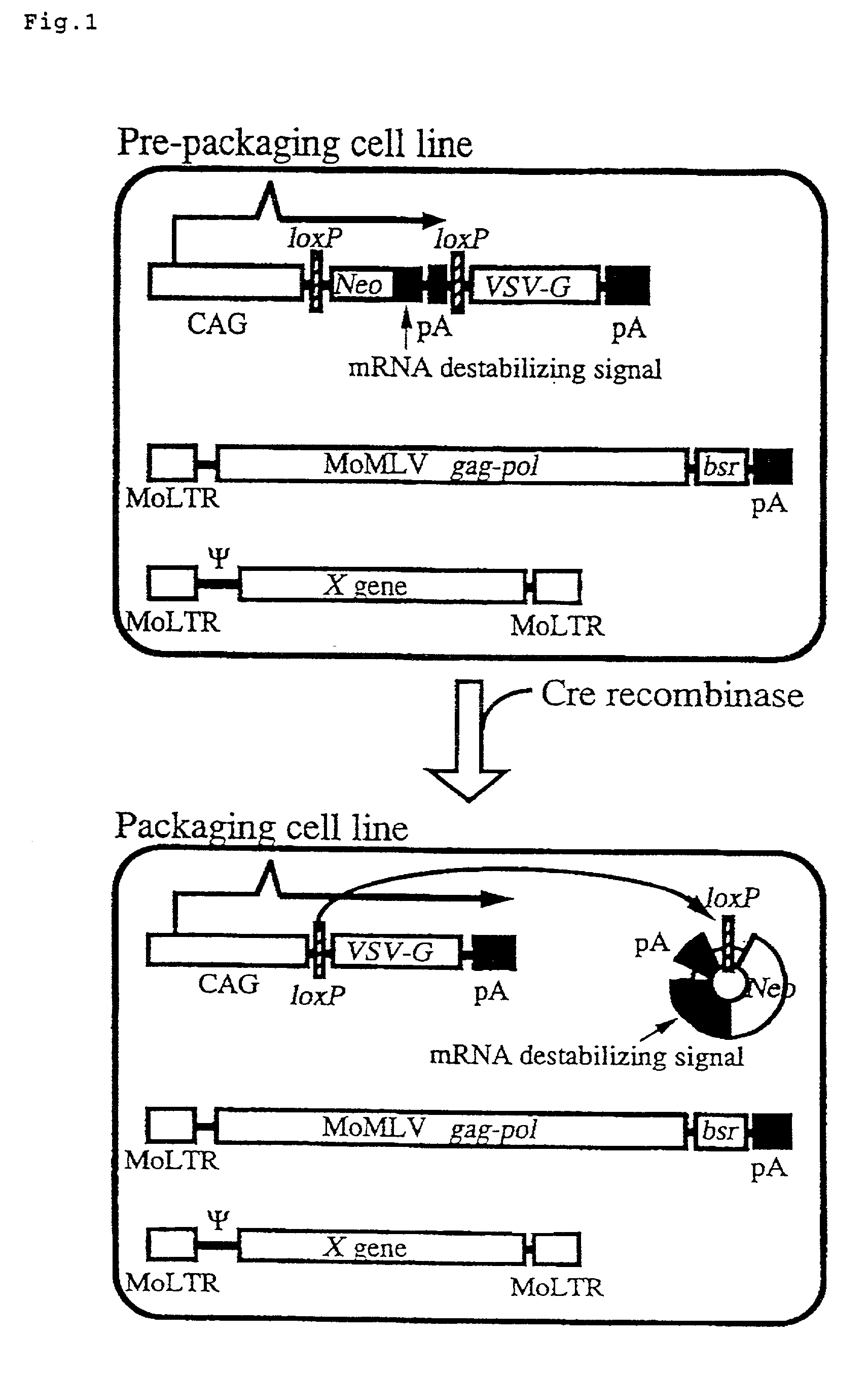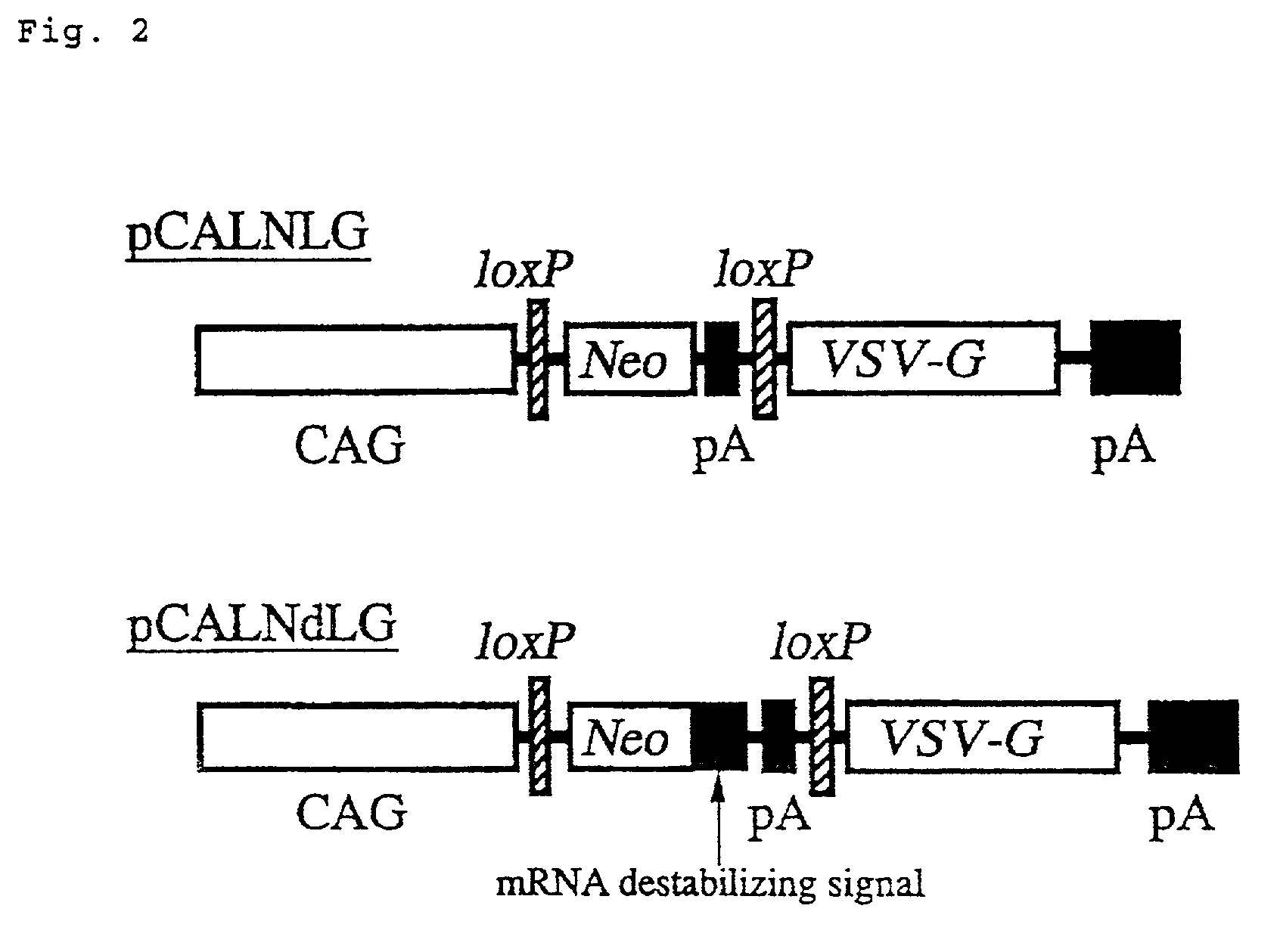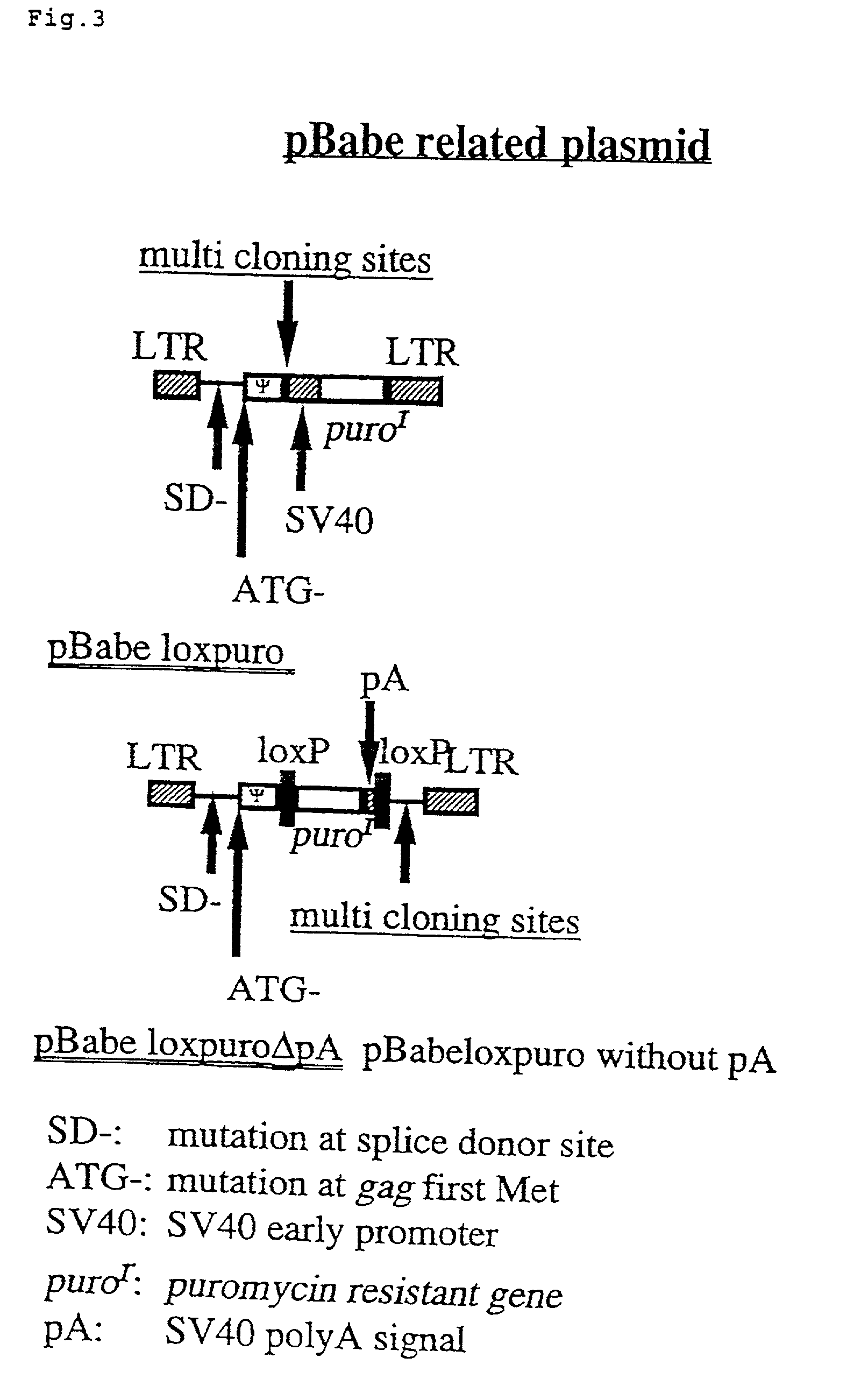Process for preparing retrovirus vector for gene therapy
a technology of retrovirus and gene therapy, applied in the field of process for preparing retrovirus vector for gene therapy, can solve the problems of insufficient therapeutic effect, no technique has been established, and it is difficult to prepare vectors with such high qualities, and achieve the effect of high titer and high screening efficiency of pre-packaging cells
- Summary
- Abstract
- Description
- Claims
- Application Information
AI Technical Summary
Benefits of technology
Problems solved by technology
Method used
Image
Examples
example 1
Transfer of pCALNLG Into FLY Cells and Primary Screening of Prepackaging Cell Lines Inducing the Expression of VSV-G Gene Product
[0060] A DNA construction pCALNLG (FIG. 2) having a neomycin resistance gene for inducing the expression of the VSV-G gene product by the Cre recombinase was transfected in the following manner into FLY cells (Cosset, et al., J. Virol., 69, 7430-7436, 1995) capable of expressing the gag and pol gene products of MoMLV stably.
[0061] 10 to 30 .mu.g of pCALNLG was transfected into FLY cells, which had been transferred on the previous day to give a density of 5.times.10.sup.5 cells / 10 cm dish, by the calcium phosphate method (Chen, C. and Okayama, H., Mol. Cell. Biol.,7, 2745-2752, 1987). On the next day, the calcium phosphate was eliminated and the cultured cells were divided one or two days thereafter. On the next day, 1 mg / ml of G418 (mfd. by GIBCO) which is a neomycin derivative was added thereto to screen stable strains. The screening was continued for abo...
example 2
Detection of VSV-G Gene Product Produced By PtG-L1 Cells By Western Blotting Method
[0063] The VSV-G gene product produced by PtG-L1, i.e., the prepackaging cells strongly stained in Example 1, was detected by using the anti-VSV-G antibody (P5D4) recognizing the C-terminal part thereof in the following manner.
[0064] The PtG-L1 cells were transferred into two dishes (10 cm) to give a density of 5.times.10.sup.5 cells / dish. On the next day, the cells in one dish were infected with AxCANCre at an m.o.i. of 30, while those in another dish were not infected. After four days, the cell constituents were solubilized with 500 .mu.l of a sample buffer (61.2 mM Tris / HCl, pH=6.8, 1.6% SDS, 2.5% .beta.-mercaptoethanol, 9.8% glycerol), then treated at 100.degree. C. for 5 minutes and stored at -20.degree. C. The protein contained in the sample thus obtained was determined by using a protein assay solution (mfd. by BIORAD) and SDS-PAGE was carried out in such a manner as to give 20 .mu.g of the pro...
example 3
Transfer of Virus Vector DNA Into PtG-L1 and Determination of Virus Production By Cre Recombinase
[0065] Eleven clones which had not been subjected to any treatment but been cultured as such as described in Example 1 were stored in liquid nitrogen and a retrovirus vector DNA encoding .beta.-galactosidase (lacZ) was transferred into a portion of these cells via transduction of amphotropic retrovirus encoding nlslacZ. After confirming that the retrovirus genome encoding lacZ had been transferred into most of the cells by X-gal staining, each clone was divided into two. One section was not infected but cultured as such, while another section was infected with AxCANCre to thereby induce the expression of the VSV-G gene product. Subsequently, the liquid culture medium was replaced by a fresh one at intervals of about three days until the day before the recovery of the virus. On the next day, the culture supernatant was recovered and centrifuged at 3,000 rpm for 30 minutes. The supernatant...
PUM
| Property | Measurement | Unit |
|---|---|---|
| time | aaaaa | aaaaa |
| temperature | aaaaa | aaaaa |
| temperature | aaaaa | aaaaa |
Abstract
Description
Claims
Application Information
 Login to View More
Login to View More - R&D
- Intellectual Property
- Life Sciences
- Materials
- Tech Scout
- Unparalleled Data Quality
- Higher Quality Content
- 60% Fewer Hallucinations
Browse by: Latest US Patents, China's latest patents, Technical Efficacy Thesaurus, Application Domain, Technology Topic, Popular Technical Reports.
© 2025 PatSnap. All rights reserved.Legal|Privacy policy|Modern Slavery Act Transparency Statement|Sitemap|About US| Contact US: help@patsnap.com



